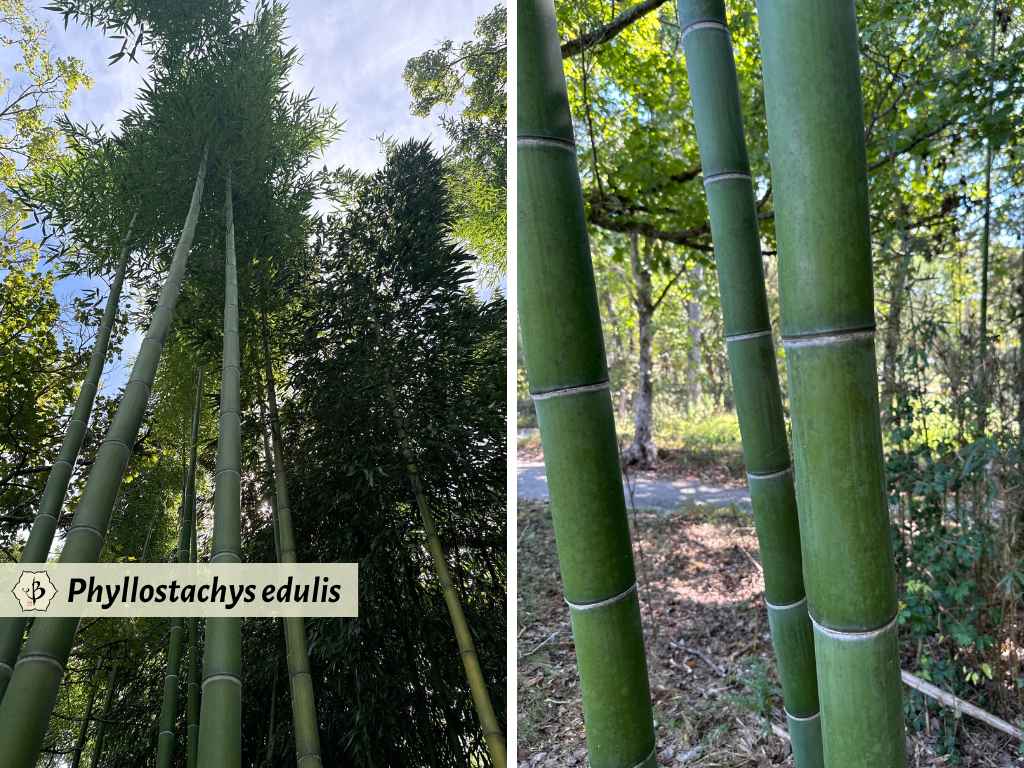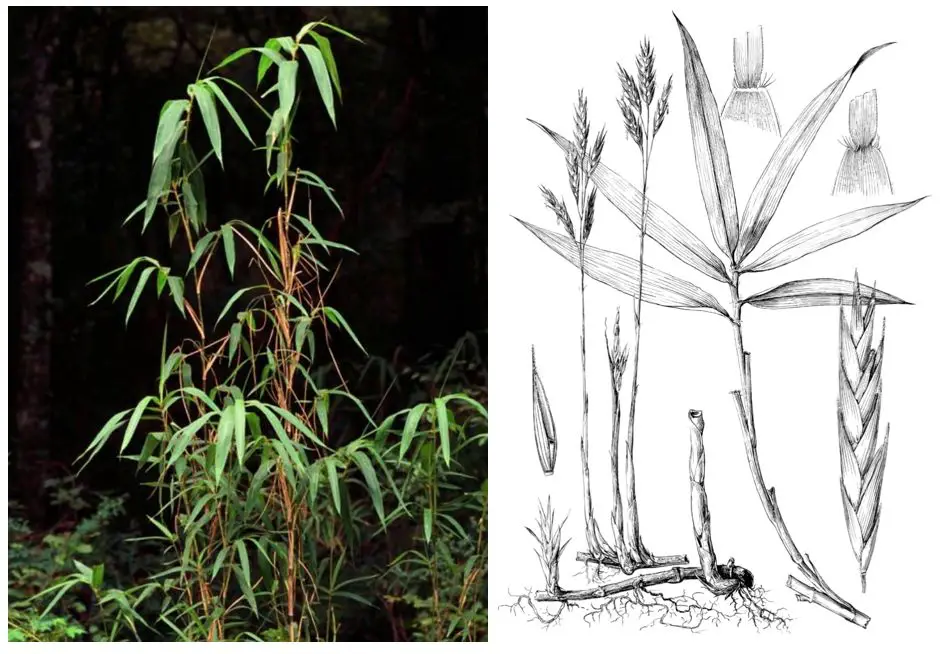The history of bamboo weaves a rich and colorful tapestry that drapes across several thousand years of Asian culture. It’s as iconic and ubiquitous as the Chinese dragon or Japan’s rising sun. But once in a while, we come across a thread of bamboo history that takes us out of Asia and into unexpected territory. Of course, bamboo also thrives in South America, and parts of Africa and Australia, as well. Bamboo is not unheard of in North America, but no one expected an excursion into bamboo antiquity to take us to the Bluegrass state of Kentucky.
The story is uncertain, but one possible explanation for Kentucky’s name has to do with a mondegreen or corruption of the phrase “Land of Cane and Turkey”. Three species of Arundinaria bamboo are native to this part of the country and are commonly known as hill cane or river cane. Kentucky is also home to hundreds of thousands of Eastern wild turkeys as well as the Wild Turkey Bourbon distillery. So this explanation actually seems quite possible. And Kentucky is well-known for other grasses, too, like Poa pratensis and Cannabis sativa.
I’d like to thank my friend, Eric Foote, from Footprint Bamboo, for bringing this historical footnote to my attention. With my decades of experience in the natural fibers industry, I’d always associated Kentucky with hemp farming, far more than bamboo horticulture. He passed this piece of bamboo trivia to me with a caveat; he couldn’t promise that it was accurate or verifiable. But a bit of research on my end quickly confirmed that the “Land of Cane and Turkey” phrase is conventionally accepted, at least as one possible story behind the naming of the Bluegrass State.
NOTE: This article first appeared in May 2021, most recently updated in October 2024.
A little etymology from the Bluegrass State
Most Americans probably don’t put much thought into where the name of their state came from. In some cases, it’s pretty straightforward. I’m thinking of Washington and New Mexico. Virginia, interestingly, was named after Queen Elizabeth, who was sometimes referred to as the Virgin Queen because she never took a husband. Nevada, ironically, is Spanish for snow-covered, though snow is about the last thing you’ll expect to see when you drive to Las Vegas. And the naming of California is a whole other story unto itself.
But Kentucky, what’s that all about? It sure doesn’t sound like a name from British royalty. Nor does it have the ring of an American Indian tribe. In fact, we have a few competing explanations, but no solid consensus on where the name Kentucky comes from.
One thing historians seem to agree on is that the river got its name first, and the territory took its name from the Kentucky River. So by 1776, the backwoods of Virginia was known as Kentucky County, later to become the State of Kentucky. Not quite one of the original 13 colonies, Kentucky became the 15th state in 1792.
Click here to learn more about bamboo etymology.

Competing theories on Kentucky
So then where did the Kentucky River get its name? One explanation points to an Iroquoian language, possibly Mohawk or Seneca, and a phonetically similar phrase that means “on the meadow” or “on the prairie”. That sounds like a reasonable way to name a river. It’s also consistent with Kentucky being the Bluegrass State, teeming with meadows and prairies.
On the other hand, there’s a phrase in the Algonquian language, Kenta Aki, which means something like “Land of Our Fathers”. That certainly has a Native American sound, but the connection with Kentucky’s landscape is far from obvious.
These etymologies come from Wikipedia and seem to be the most widely accepted. But the State Symbols website offers a different translation. They say that the Iroquoian phrase “ken-tah-ten” means “Land of tomorrow”. That has an air of poetry to it and even makes sense in the historical context of Colonial America.
Wikipedia and the State Symbols site both mention the phrase “Cane and Turkey”, which remains my personal favorite. It’s easy to see how this phrase could morph into Kentucky, especially when you look at alternative spellings from the pioneer days, such as Kaintuckee and Cantuckey. And indeed, there was plenty of cane grass in Kentucky back then, especially around the river banks. And no shortage of turkeys either.
Bamboo and river cane in Kentucky
When you picture Kentucky, it’s unlikely that the first variety of grass you think of will be bamboo. Chances are it’s Poa pratensis that comes to mind. You probably don’t know it by its binomial nomenclature, but it’s better known as Kentucky bluegrass. Unlike the state’s official name, it’s pretty easy to see how Kentucky earned its nickname.
There’s also a popular form of music, involving fiddles and banjos, that resonates from the foothills west of the Appalachians. It’s another good reason why Kentucky proudly calls itself the Bluegrass State.
Bamboo has a less common connection with Kentucky, but when Europeans first arrived in what’s now the American South, they definitely noticed an abundance of bamboo. Today we call it Arundinaria appalachiana, Arundinaria gigantea and Arundinaria tecta, known respectively as hill cane, river cane and switch cane.
Distribution of Arundinaria
The genus Arundinaria comprises these three species, the only known varieties of bamboo native to the United States. These are temperate, running bamboos, which tend to grow in thickets, also called canebrakes, along waterways and ravines in the southern states. They happen to have a high tolerance for wet soil and cold weather.

Though once widespread, most of the Arundinaria habitat has diminished as a result of agriculture and other human activities. Today the highest concentrations of these bamboo species are in northern Georgia, western North Carolina and eastern Tennessee.
It’s uncertain how much Arundinaria was growing in the riverbeds of Kentucky in the 18th century, but its distribution extended as far north as Maryland and the Ohio River Valley. Today, however, the thickets of native bamboo are pretty few and far between.
Turkeys of Kentucky
The prevalence of wild turkeys in Kentucky and the surrounding region is no secret. Wild Turkey Bourbon has its headquarters and distillery in Lawrenceburg, Kentucky. Turkeys are commonly seen throughout the wilder portions of the state, and not only by those who’ve been tipping whiskey.
According to the Kentucky Department of Fish and Wildlife, there are still about 400,000 wild turkeys in the state. Most of these are the Meleagris gallopavo silvestris, the native species better known as the Eastern wild turkey.
Hemp in Kentucky
Today the Bluegrass State has a lot more hemp than bamboo. After nearly a century of prohibition, industrial hemp (a variety of Cannabis sativa, also known as marijuana) launched a great comeback, largely centered in Kentucky.
Kentucky started farming hemp in the late 1700s. And in the 19th and 20th centuries, it was the biggest hemp-producing state in the nation, with thousands of acres in cultivation. But in 1937, the federal government effectively outlawed the crop, guilty by association with its close cousin marijuana.
In 2018, Senate Majority Leader Mitch McConnell introduced the Hemp Farming Act, which later passed as part of the 2018 U.S. Farm Bill. McConnell’s home state of Kentucky had already adopted similar rules for hemp, allowing it to be famed commercially with less than 0.3% THC, the psychoactive compound in marijuana.

As of 2020, Kentucky is one of only three states farming more than 100 acres of commercial hemp. The other two are Colorado and Tennessee. Kentucky continues to have more hemp acreage than any other state, with plans to plant about 32,000 acres this year (2021). In reality, however, only about one-third of that acreage with probably get planted. Contrary to its historic legacy, most of the industrial hemp cultivation is currently for CBD oil, the medicinal extract, rather than the plant’s superior fibers and textiles.
In the meantime, Kentucky is not a major player in America’s budding bamboo industry. Bigger things are happening in Alabama, Florida, Georgia, and North Carolina.
Incidentally, cannabis is not actually a grass, despite the popular slang. But bamboo, which often grows to the size of a tree, does belong to the grass family, Poaceae. History is full of surprises, and it seems like agronomy is too.
Further reading
If you enjoyed this story about the role of hemp and bamboo in the history of Kentucky, you might also take a look at these articles about bamboo around the world.
- Where does bamboo come from?
- Genus Arundinaria: Native bamboo of North America
- Bamboo in the Philippines
- South American bamboo
- Bamboo in Africa


























